How I sign my name on a painting and why I sign it this way…
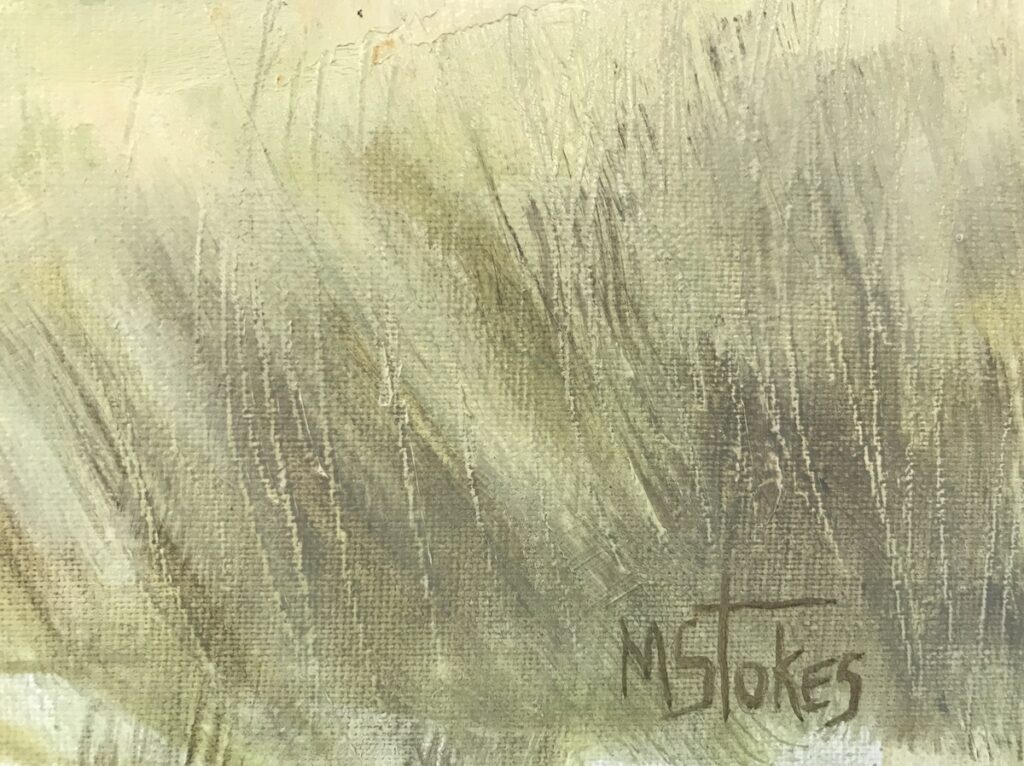
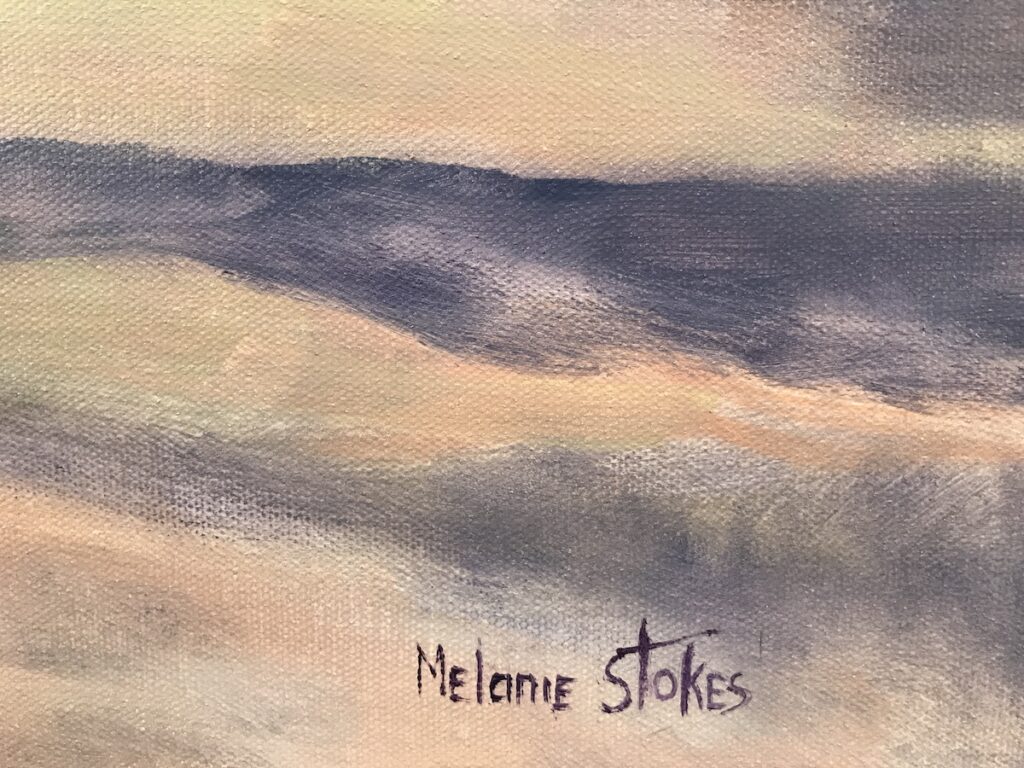
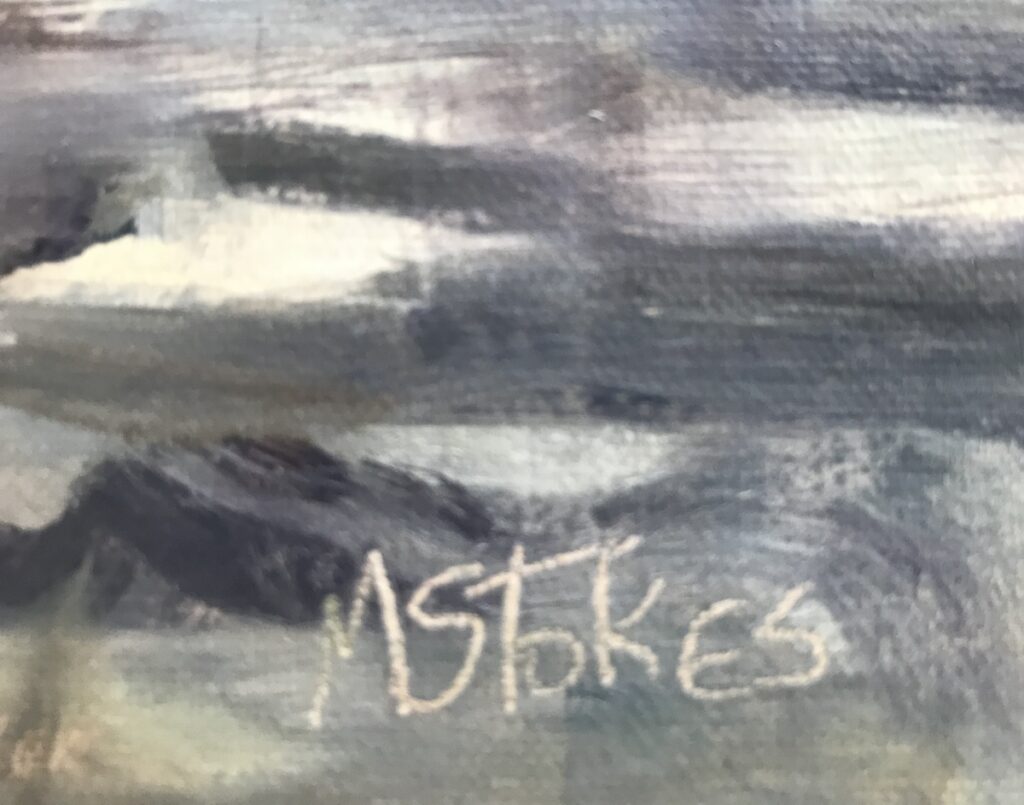
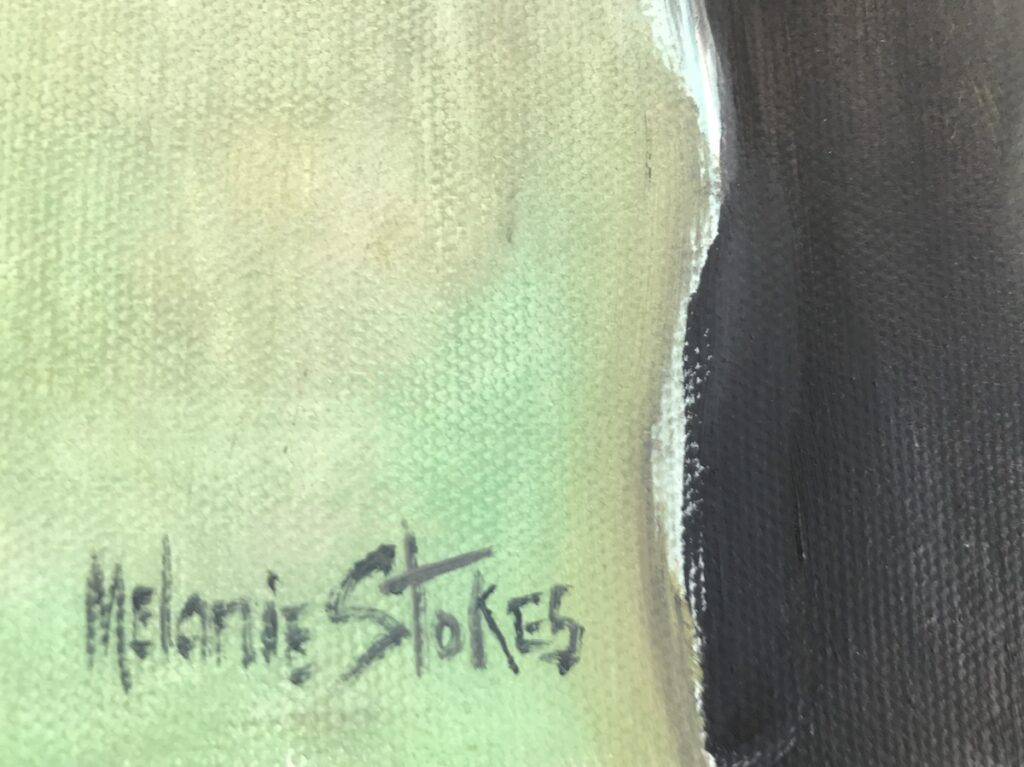
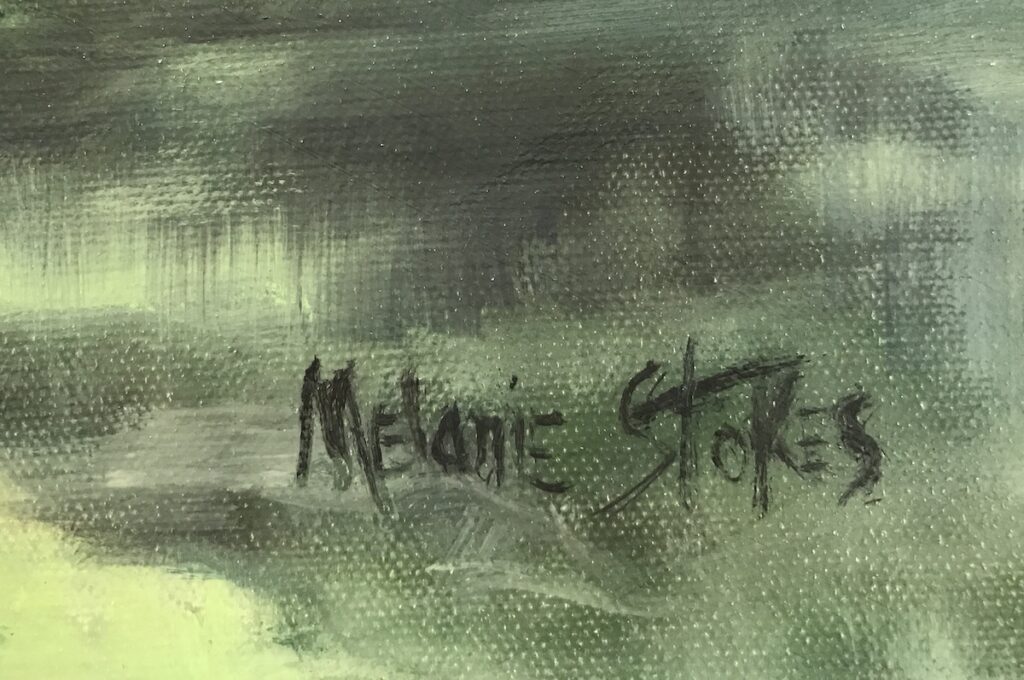
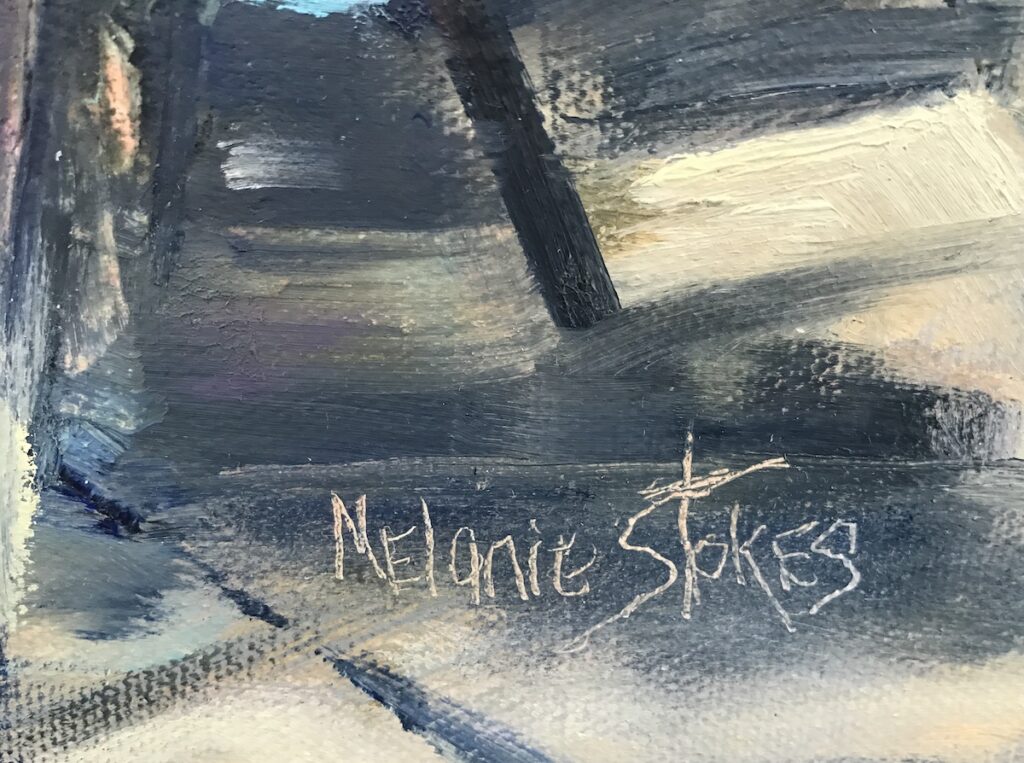

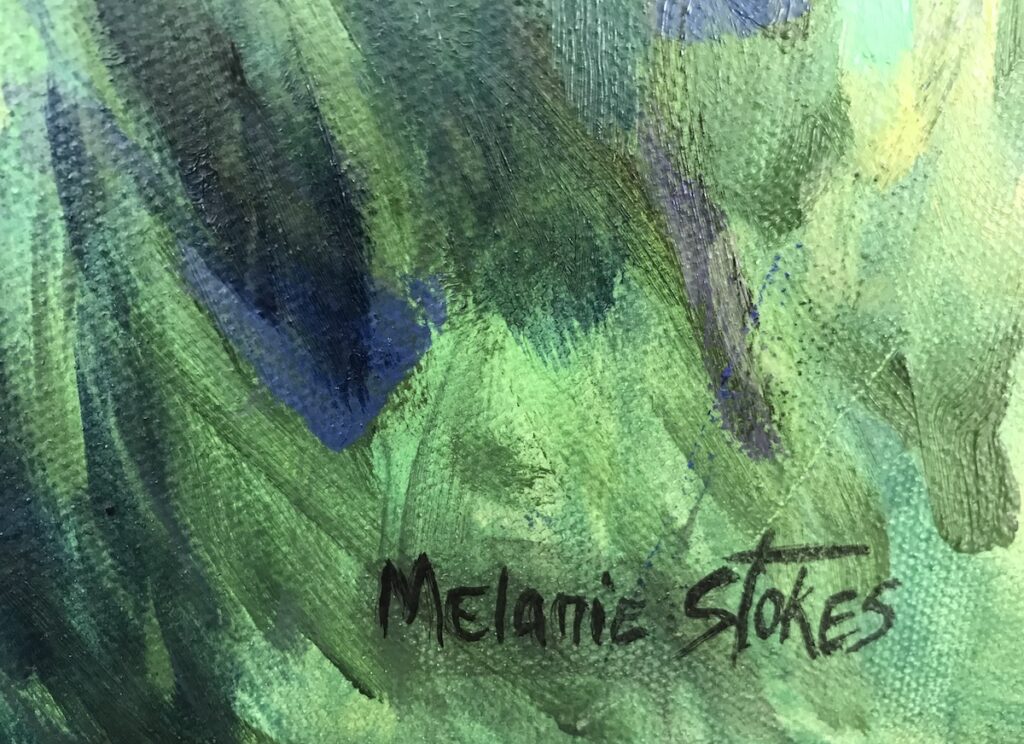
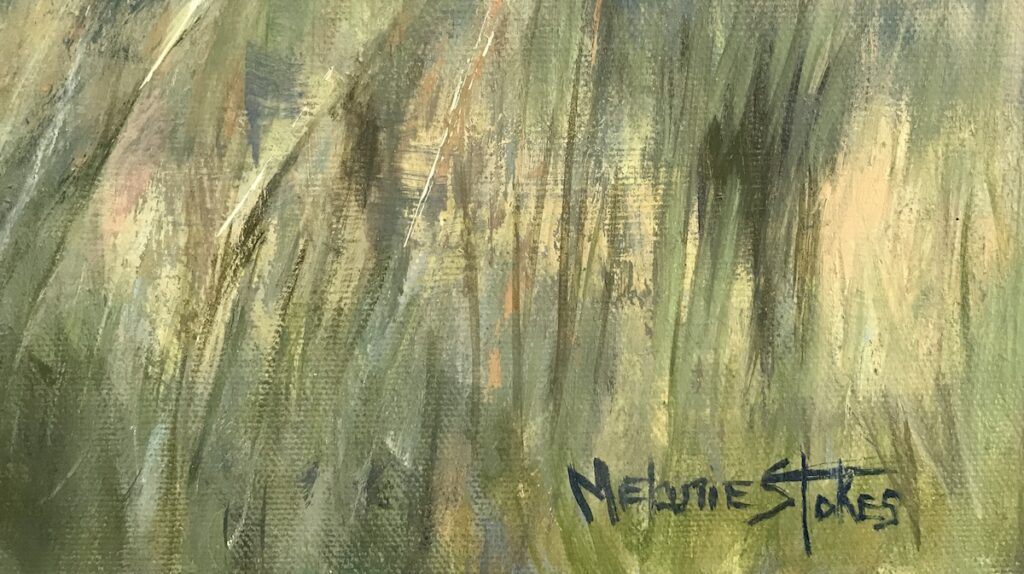
Signatures in the bottom corners of paintings
My handwriting has certainly changed over the years. From the curly cued letters of childhood, through the teen phase of dotting my i with a heart, and into the mixture of capitals and cursives that quickly come from my hand today, the style has changed much.
One reason my signature has changed is that I am often signing with a paintbrush! (Go ahead, try it! It takes some practice.) For that reason, most of my early paintings are signed with a black Sharpie pen. Future generations will look at the paintings and say, “Ah, it’s from her ‘Sharpie Period’ – when she didn’t know how to sign her name with a paintbrush.”
Now, there are two variations of the signature that you might see. If my first and last name is signed, it is a large painting, most likely done in a studio. But when I am painting outside, en plein air, I am in a hurry. The 11×14 canvas or smaller lends itself to a quick “MStokes,” scratched into paint with the tip of a palette knife… if the paint is heavy enough there. When my mother named me, she was thinking more about the melodic sound of the three syllables and the sweetness of Olivia de Havilland’s character in Gone With the Wind, than how long it would take me to write it with a paintbrush!
And here is the inside story of the Story Behind the Paintings — Looking at the signatures, you might notice that the cross piece of the t in Stokes is rather accentuated. I do this purposefully. Crossing the t is the last thing I do in my signature. And when I cross the t, I try to place it higher and wider than the other letters. As I cross the t, I remind myself that I am painting for the God who loves me enough to submit to death on a cross. I am reminded that I am painting through His grace. I am reminded that I belong to Jesus. And that my name needs to reflect His name.
A good name is better than great riches,
and good favor is above silver and gold.
Proverbs 22:1